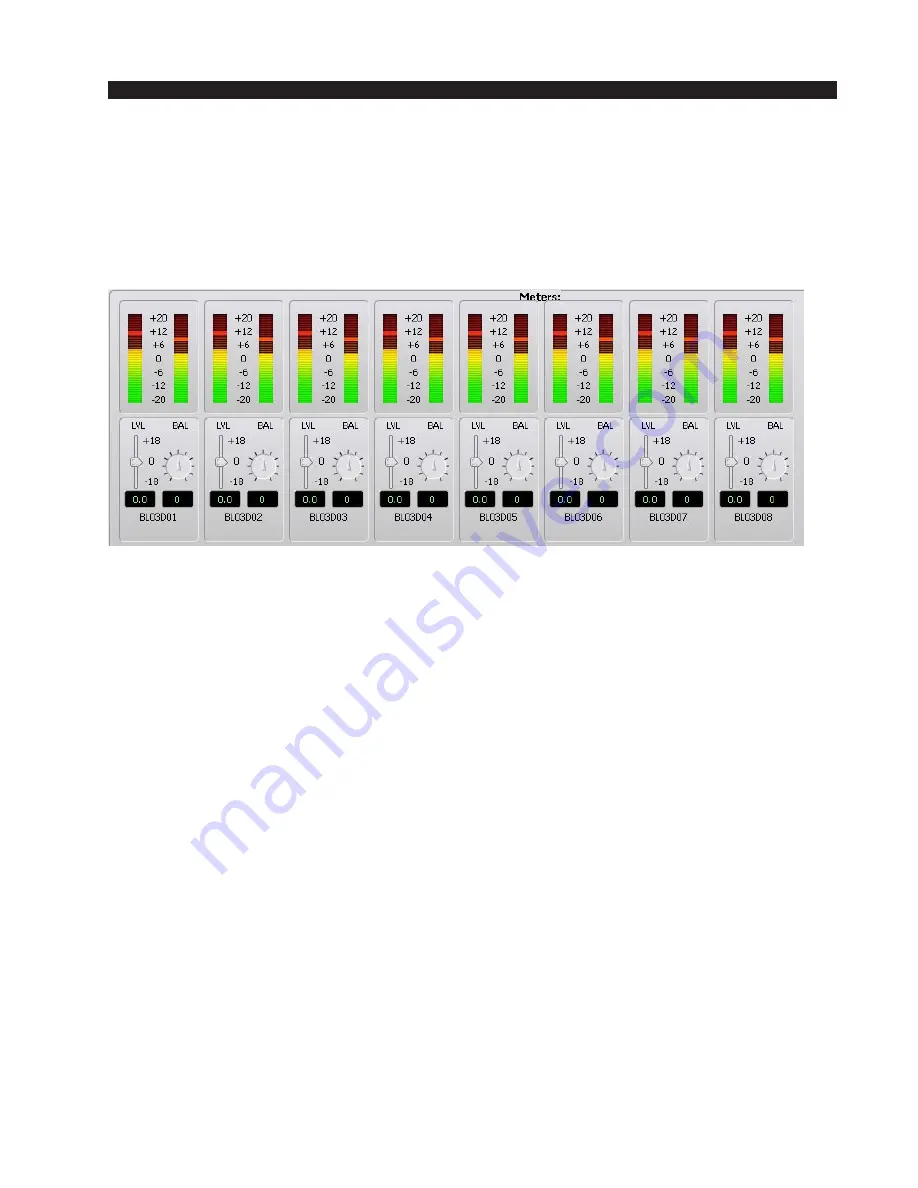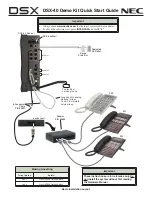
W H E A T N E T - I P
N A V I G A T O R G U I
page 4 – 48
WheatNet-IP
/ Apr 2009
Most folks will just use the automatic system defaults and not bother with any of
this initially, at least until they need to define some logic signals. Don’t be afraid to
experiment with defining signals. You can always edit back any changes you make,
and if you really get things out of whack, you can just rerun the System Startup Wizard
for the BLADE and start over.
Meters
The bottom portion of the “Destinations” tab window, as mentioned before, shows
the output channel meters and gain settings. The 16 individual baragraph meters show
audio levels for the individual channels color coded over a 40dB range, with the highest
level being “+20” VU, corresponding to +24dBu, 0dBFS, and the onset of clipping.
These meters show the actual output signal level as modified by the output gain setting.
Below the baragraph meters are shown individual slider controls for adjusting each
channel’s gain or loss over a range of +/-18dB. The slider handle, or knob, moves to
indicate a relative gain setting as you drag it with your mouse, and the text box below
the slider updates with the specific gain value. If you prefer, you can drag your cursor
over the number in the text box to highlight it and type in the gain value you want. The
gain adjustment is made in real time and will reflect instantly on the bargraph meters.
The system rounds off gain settings to the nearest 1/10th dB.
If the signal is defined as stereo a balance control will be displayed to the right of
the level control. This control allows you to adjust the balance of the left and right
stereo signal. The adjustments can be made by left clicking and holding the control
while moving the cursor in a circular motion. If you prefer, the arrow keys can also be
used to make this adjustment. Like the level control, you can highlight the number in
the text box and set the balance level with “0” being center. The balance adjustments
are also made in real time and will reflect instantly on the bargraph meters.
Please note that any gain modifications you make to a destination signal will affect
the level of that output for all sources feeding it. If you are making a gain adjustment
to compensate for a systematic gain problem, it might be better to make a source gain
adjustment, and leave the destination gain alone. Destination gain adjustments are best
used for output signals known to be too low or too hot, such as those feeding
headphones or amplified speakers with no gain control of their own, to bring them to
the correct listening level.
WheatNet-IP
/ Jan 2010
Содержание WheatNet-IP Blade3s
Страница 2: ...TECHNICAL MANUAL Wheatstone Corporation April 2009 AUDIO OVER IP NETWORK WheatNet IP ...
Страница 13: ...Quick Start 7 WheatNet IP Apr 2009 Figure 4 ...
Страница 224: ...A P P E N D I C E S page A 34 WheatNet IP Apr 2009 Appendix 5 Contents External Controllers A 35 ...
Страница 238: ...page A 48 WheatNet IP Mar 2014 A P P E N D I C E S Click Next Click Install ...
















































